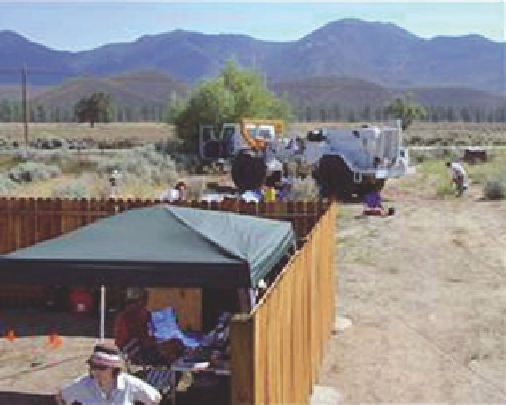Geoscience Reference
In-Depth Information
Fig. 5.8. Garner Valley iteduring a UTexas collaborative study usingT-Rex
concrete slab on grade. The superstructure is of a size appropriate for testing on one of
the NEES shake tables. Shakers can be mounted on the roof for active experiments to
complement passive earthquake monitoring. The SFSI facility was designed to study the
passageofwavesthroughthesoilcolumnbelowthestructure,upthroughthefoundation
and into the structure. Often the observations of ground shaking recorded on the founda-
tion of structures is not the same as that recorded on open ground due to the interaction
between the soil and foundation. Understanding these interactions at a relatively simple
site using a simple structure is a primary purpose of this facility. In addition, using a
remotely operable shaker attached to the roof of the structure, temporal changes in the
structures response can be monitored. Environmental factors like temperature and the
level of saturation of thenear-surface soil can have an effect on its response.
2.2.4. Wildlife refuge liquefaction field site
Thisliquefactionfieldsitehasbeenthoroughlycharacterizedthroughgeotechnical bore-
hole samples, as was a nearby site that was previously studied by the USGS. Located
in California's Imperial Valley the Wildlife Liquefaction Array (WLA) field site records
numerous earthquakes daily in this seismically active area at the southernmost terminus
of the San Andreas Fault system.
WLA is located on the west bank of the Alamo River 13km due north of Brawley,
California and 160km due east of San Diego. This area has been frequently shaken by
earthquakes with six events in the past 75 years generating liquefaction effects within
10km of theWLA site.

